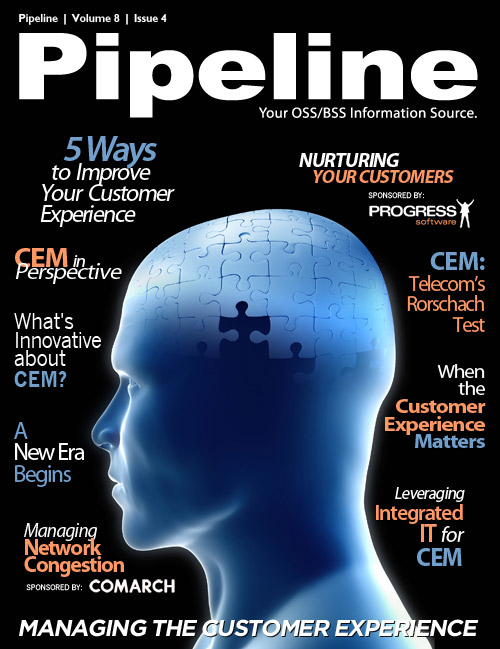Rather than explore what CEM is, perhaps it’s better to explore what it isn’t:
CEM is not a single, unitary technology.
“At the outset, I think a lot of people thought CEM was a technology, that it was something you can
buy,” said Nancee Ruzicka, Senior Research Analyst at Stratecast’s (a Division of Frost & Sullivan) OSS
Competitive Services Analysis Service and all-around OSS whiz. “And it’s not.”
And some vendors agree. “Customer Experience Management is more than just specific technologies,”
said Richard Thomas, CEO of NetEvidence, a service assurance firm. “To be successful, organizations
must cultivate an all-encompassing culture that is focused on delivering high quality services to its
customers from top to bottom.”
However, CEM’s existence as an element of corporate culture or a business mindset (which are
laudable, but hard to quantify) notwithstanding, the term is being actively used by vendors around the
world to market solutions to service providers without a clear picture of what it is, exactly.
“For some [CEM is] about the pricing and service offers,” said Shira Levine, Directing Analyst for Next
Gen OSS and Policy at Infonetics research. “For others, it’s about the customer care experience, and I'm
sure many still consider CEM analogous to service management.”


Others argue that the term itself is relatively clear, but the usage of the term has corrupted it. “CEM
is a well-understood, but often mis-referenced framework in the operator’s playbook,” said Paolo Trevisan, VP of Marketing and Product Management for Accanto Systems, a customer assurance solutions software vendor. “CEM
encompasses 5 critical aspects of service provider operations: Acquisition, Billing, Retention,
Provisioning, and Customer Service Assurance.” That does create some parameters for the term, but
still relegates substantial swaths of the OSS/BSS experience to this new realm.
In still other cases, CEM (and the overall customer experience, more broadly defined) is a by-product
of a more general approach to quality rather than an aim all its own. “The customer experience is
considered to be a key area of differentiation, and delivering a good customer experience is essential
for those CSPs who wish to retain existing customers and attract new ones from rivals,” said Ernest
Margitta, Vice President of Marketing at Tribold, a firm specializing in enterprise product management.
“However, in order to truly optimize the customer experience, there is a vital dependency on optimizing
the product experience.”
These wide disparities in these conceptions of CEM and the customer experience represent only a
portion of the breadth and depth of the disjointed and fuzzy nature of the term. So there’s not a great
deal of consensus.
CEM is not a synonym for CRM
Not really. We all have a pretty clear concept of CRM. It’s outward-facing. It’s how we reach out and
win clients and subscribers and how we deal with existing clients and subscribers. It interfaces with BSS,
but doesn’t really touch the network, generally. It doesn’t extend down to the OSS level.










